| Early Spring Date: | March 29 |
| Late Spring Date: | May 21 |
| Best Dates to See in Spring: | April 18-26 |
Spring: Palm Warblers have two distinct populations. Birds from the eastern population are one of the earliest arriving warbler species at Monticello Park. They generally arrive around the second week in April, and they are most common during the third and fourth weeks in April. The western population is not as common and tends to pass through Monticello in early May. Palm Warblers nest in Canada and the far northern states.
Fall: Palm Warblers are not common at Monticello during the fall. In most years, only one or two are seen.
Where to See Them in the Park
Palm Warblers are not common at Monticello. They generally stay low and often can be seen on the ground. They sometimes sing from branches in the mid-canopy and below.
Physical Description
Palm Warblers compulsively pump their tail when on the ground or when foraging in trees. The tail pumping can be more important than plumage when trying to identify them.
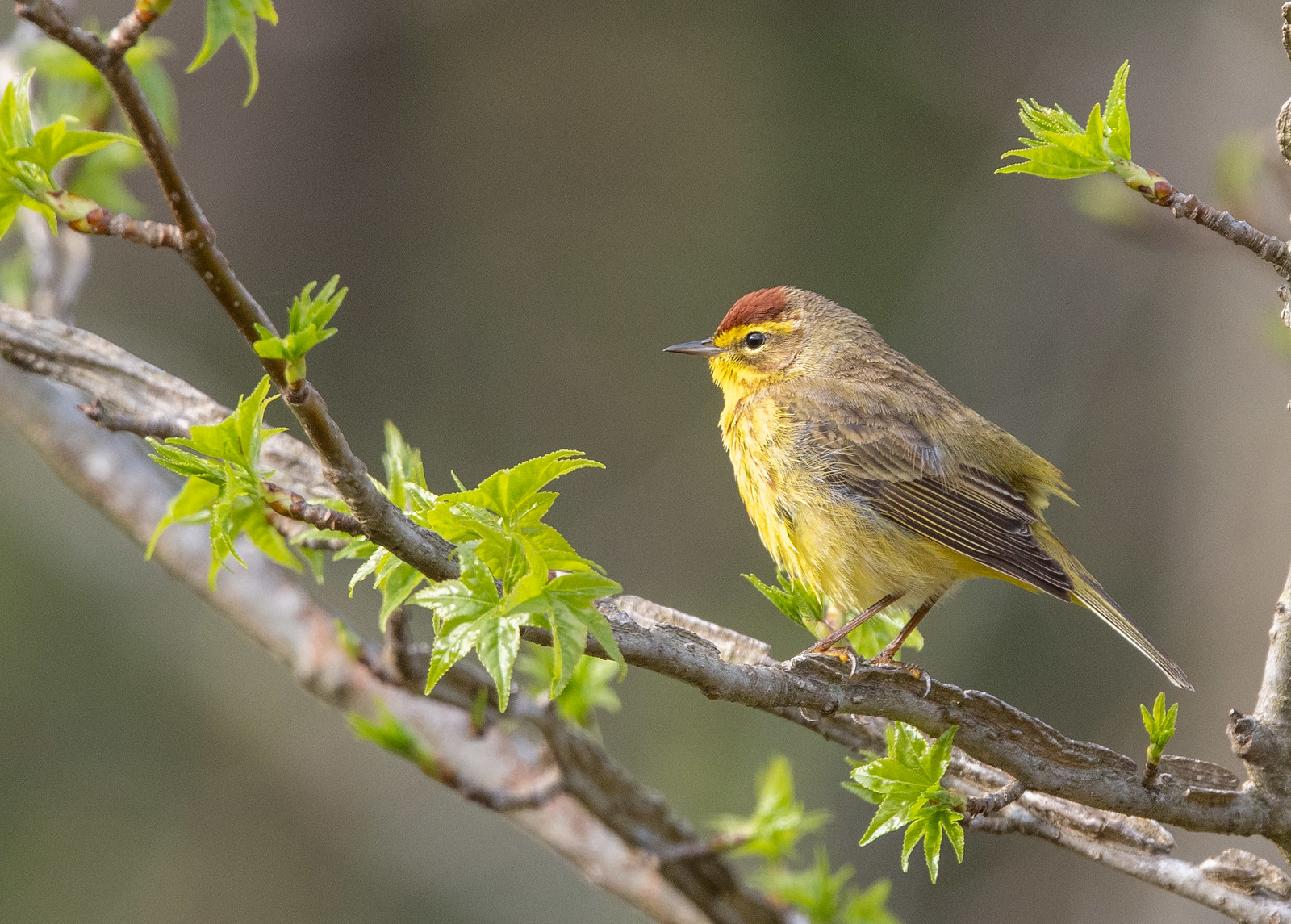
Both races have a brown cap in the spring. The Eastern race in breeding plumage is yellow underneath and has a yellow line over the eye.
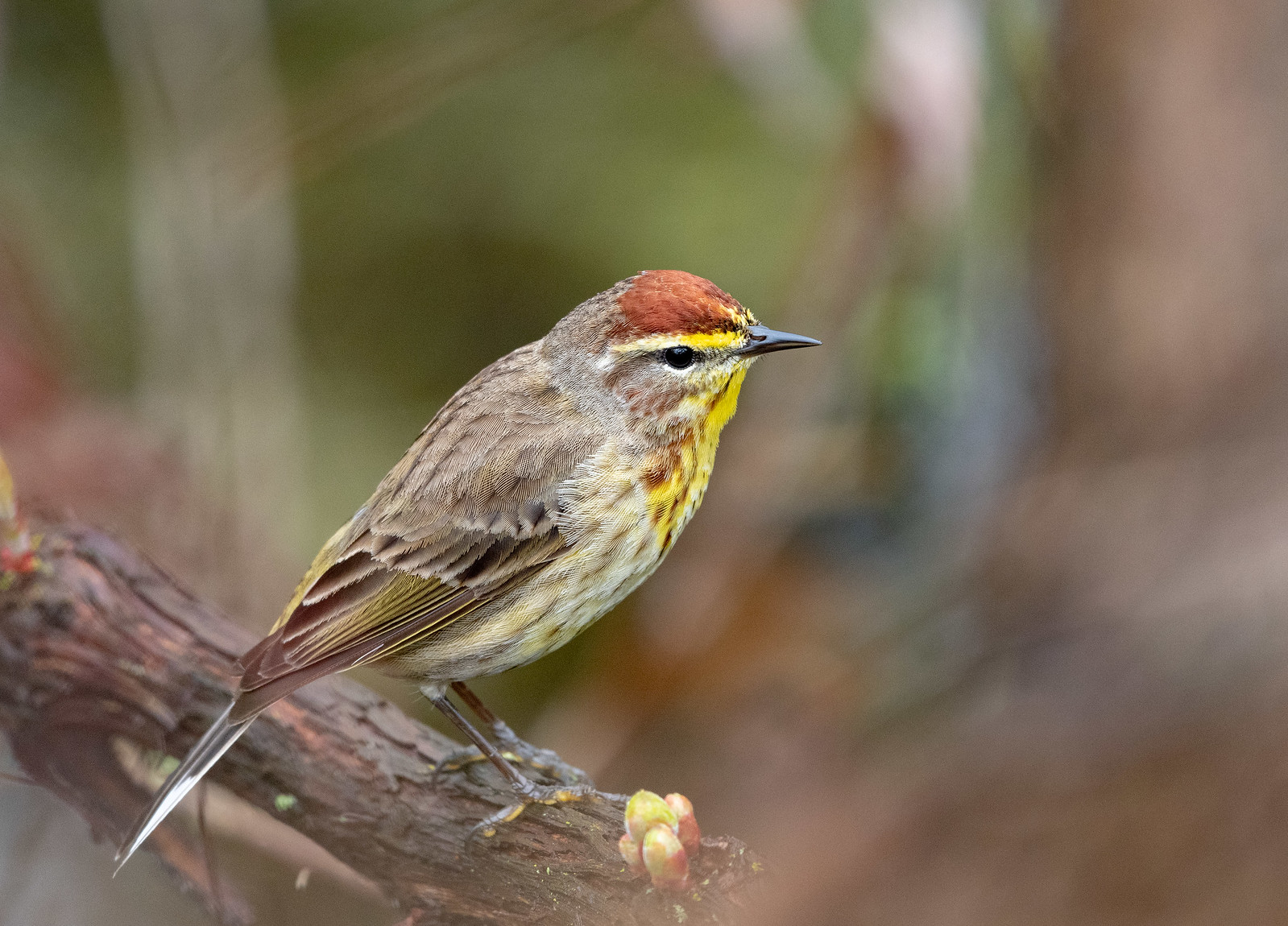
The Western race in breeding plumage has a yellow throat and upper breast, but is dingy brown or gray below. The eyeline is yellow from the bill to the eye and becomes white behind the eye.
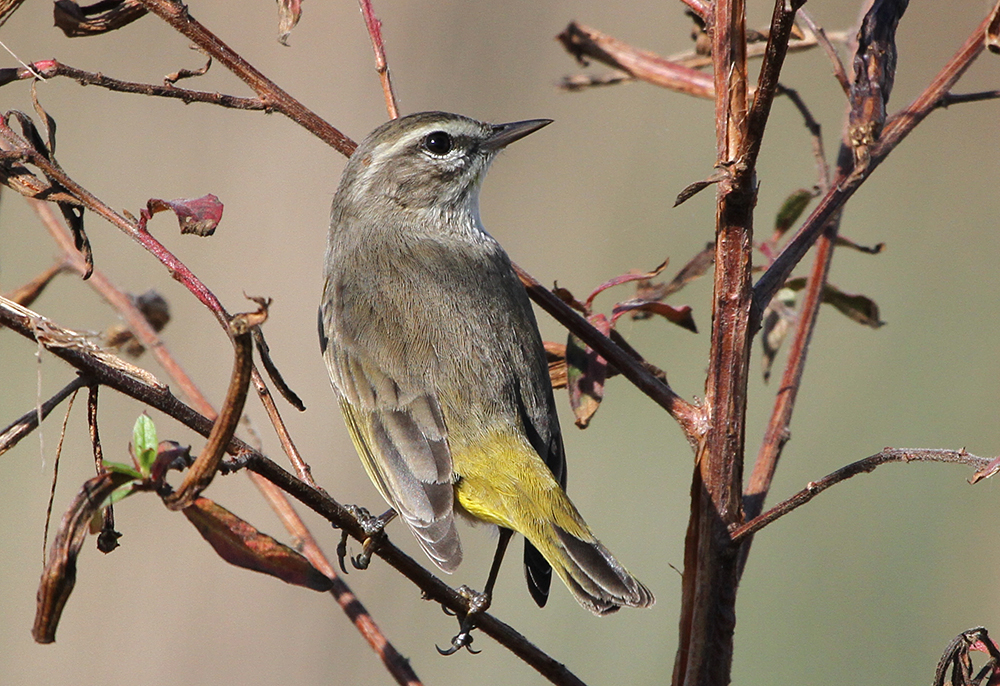
The Palm Warbler is another "yellow-rumped warbler" who is not a Yellow-rumped Warbler.
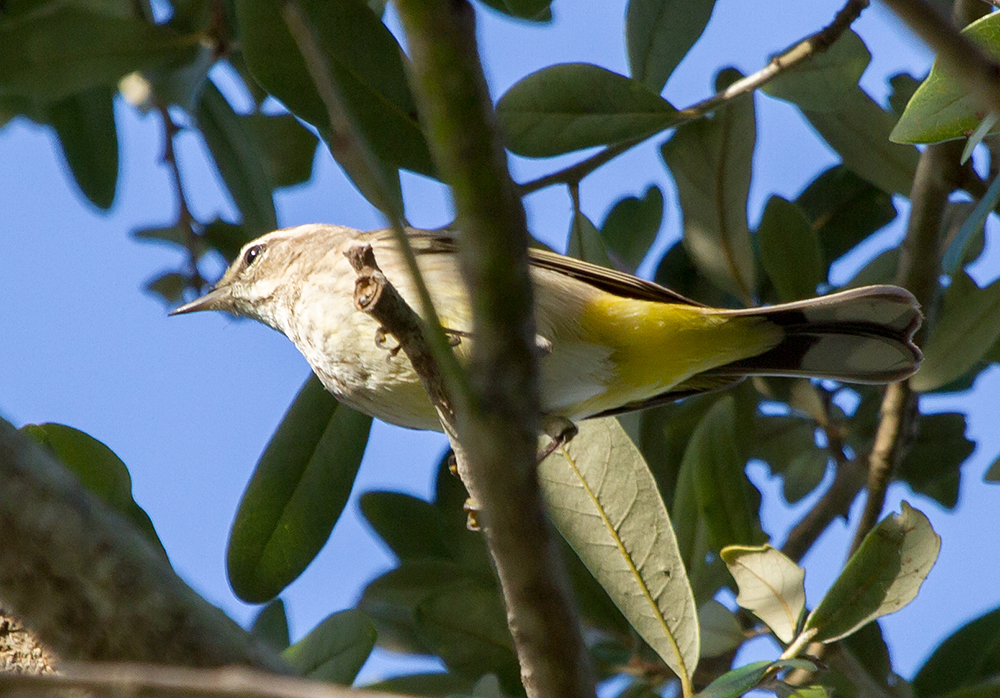
The yellow undertail is also an important fieldmark for both races in all plumages.
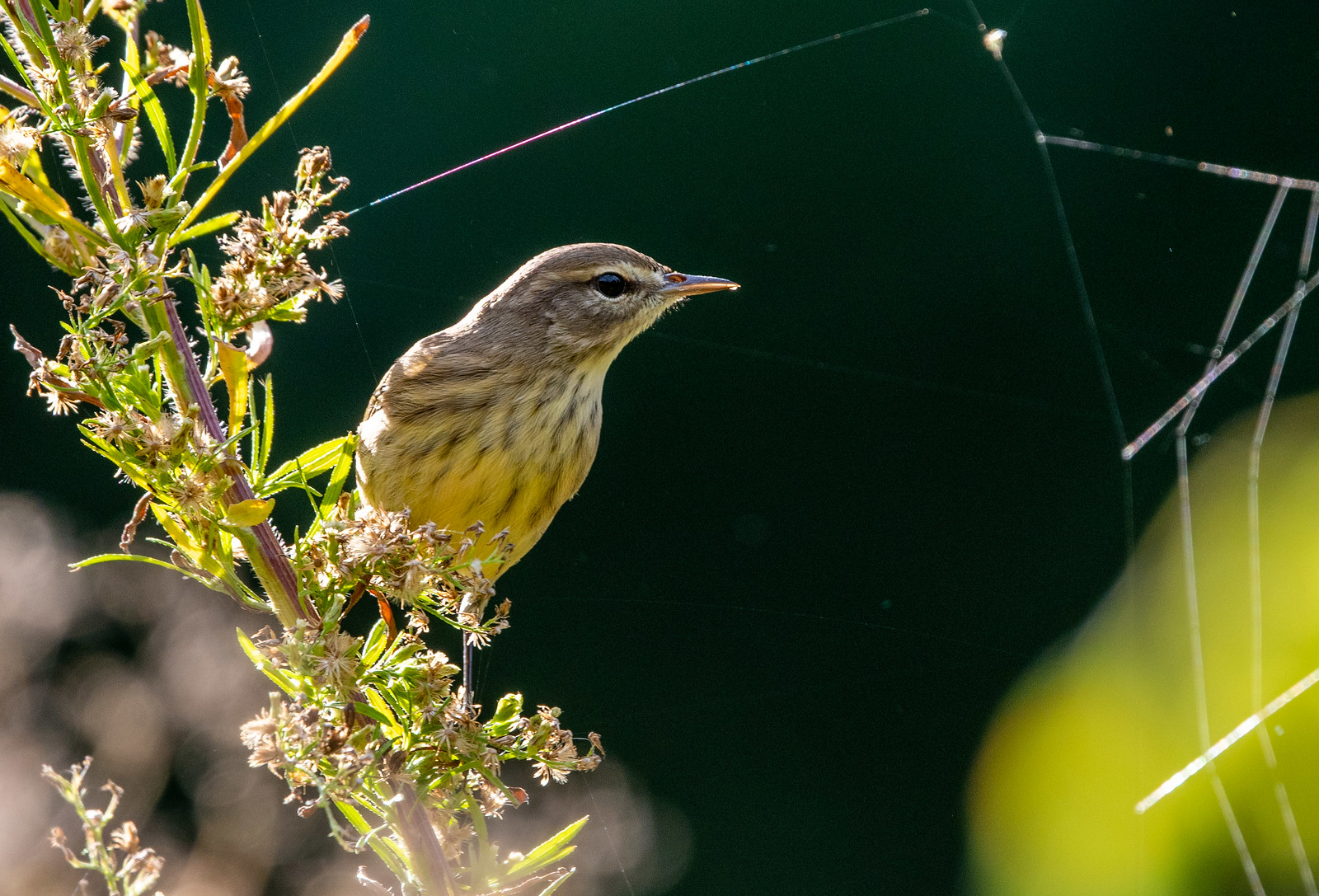
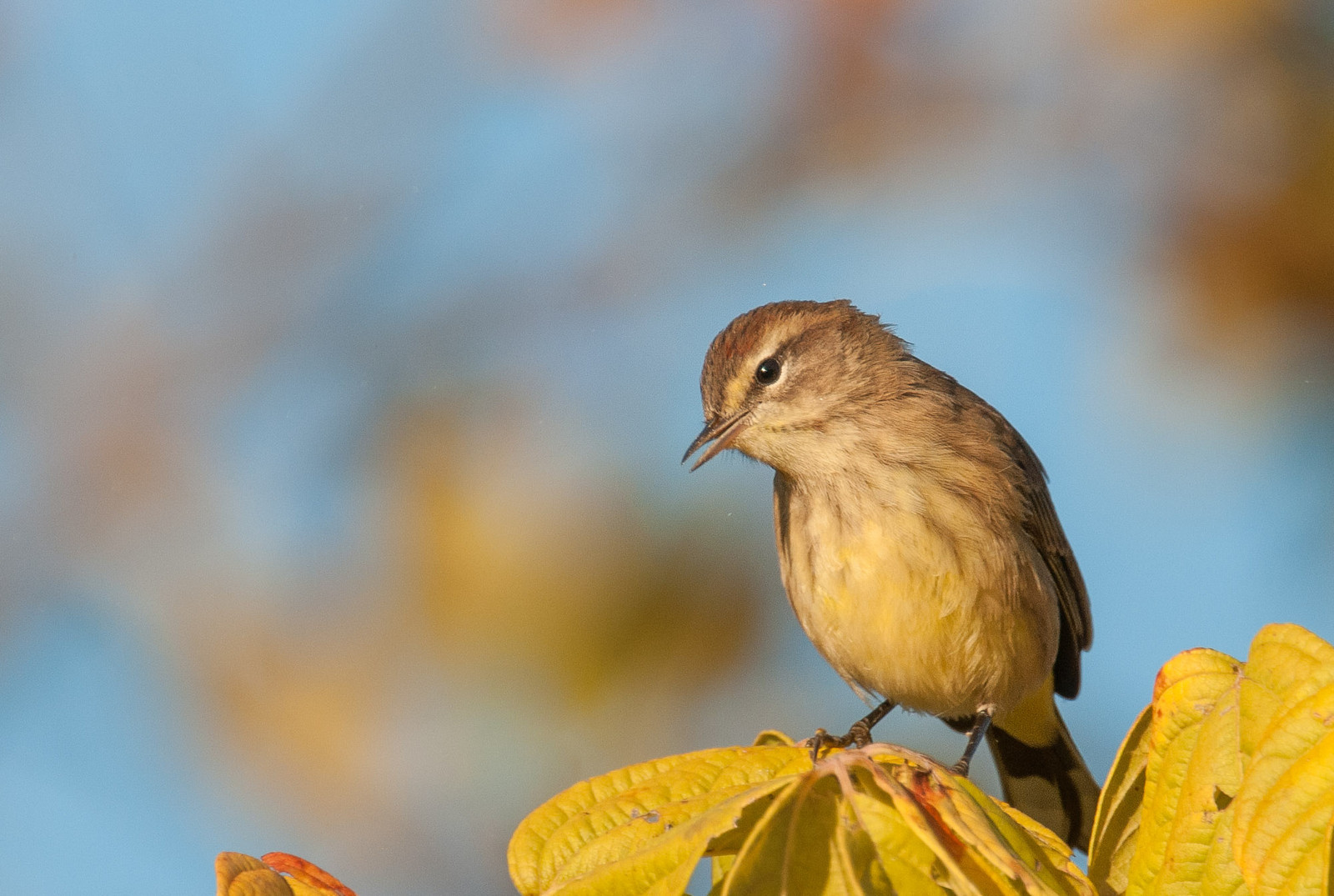
Fall: Many fall Palm Warblers have little or none of their brown cap from the spring. Fall Eastern Palms have varying amounts of yellow underneath, and some can be quite yellow.
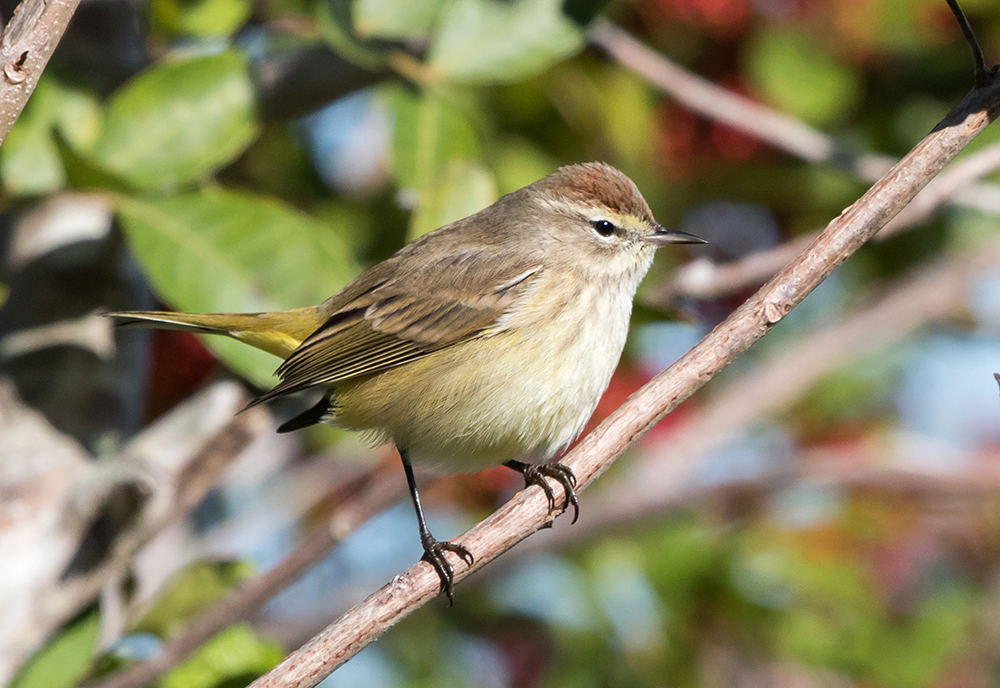

Fall Western Palms can be very pale underneath.
Vocalizations
The song of the Palm Warbler is a series of weak notes that can be either sweet or buzzy. The notes sometimes form a slow trill.
Hear the song of the Palm Warbler.
Notes
The term snowbird is applied to people from Canada or the northern states who either move to or spend the winter in Florida or somewhere else with a warmer climate. Most warblers are avian "snowbirds", and Palm Warblers are one of the most visible snowbird species. A great many winter in Florida, and they can be seen in areas with large human populations and a lot of palm trees. They are often on the ground in parks and other areas, pumping their tails as they look for food.
Origin of Names
Common Names: Palm because the first specimen collected was in palm trees on Hispaniola, a Caribbean island that includes Haiti and the Dominican Republic. The New World Warblers were named for their similar appearance to European warblers, to whom they are not related. Most of the New World warblers do not warble (sing continuously with notes that change frequently).
Genus Name: Setophaga means moth eating.
Species Name: Palmarum means in the palm trees.
Palm Warbler video footage
Return to the Index
